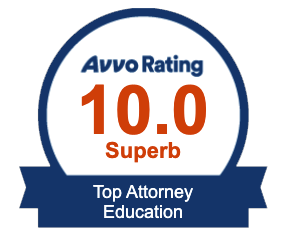It is early April and school will end for the year around the third week of May. This is time that most school systems schedule annual IEP meetings for students. Of course, some students have different dates for annual IEP meetings depending on when they became eligible for special education and related services and an IEP was developed or when they transferred or enrolled in the school system. Nonetheless, this is IEP meeting season. What should you expect at this IEP meeting? How can you as a parent be properly prepared for this meeting? Should you ask for extended school year programming? These questions and others should be raised at annual IEP meeting.
At the beginning of every annual IEP meeting, the IEP team leader will ask the teachers and specialists such as occupational therapist or speech and language therapist to give a summary of your child’s educational progress for the school year. To prepare for this part of the meeting, you should have received a copy of your child’s progress reports and report cards every nine weeks since the beginning of the school year. You should review each of these reports and determine what progress, if any, your child made on each of his IEP goals and objectives. Most progress reports show whether the child is making educational progress by stating: no progress, making progress or it cannot be determined. You should review your child’s IEP goals and objectives to determine what progress was expected from the time of the last IEP meeting to the annual IEP meeting. In other words, the IEP objective for example may state that your child will increase his reading speed from 40 words a minutes to 75 words a minute. This means the student’s baseline at the beginning of the school year for reading was 40 words a minute. The objective at the end of the school year was for the student to read 75 words per minute. If you child’s progress shows he now can read 73 words per minutes from 40 words a minutes this means he has probably mastered his objective. If your child is still reading about 50 minutes a minute, that means your child has made minimal progress in increasing reading speed for the school year. There may be legitimate reasons why your child has not made adequate progress in this areas such as illness, absences, increase in behavioral challenges, and other factors. On the other hand, there may not be legitimate reasons why your child has failed to make adequate progress and you should ask why? An IEP is an equivalent of a contract and must be followed. The school system is not a guarantor that your child must increase his reading speech from 40 to 75 words per minutes, however. It merely has to insure that your child make adequate educational progress each school year. What is adequate educational progress depends on varying facts and the individual need of each child. For some children, an increase of 35 words per year would be considered a success. For other children, an increase of 35 words per school year would be considered a disaster.
I began this discussion by asking that you review your child’s report cards and progress reports for each nine week period during the school year. What should you do if you do not have a copy of such report cards and progress reports? You can ask for a copy of these reports from the school before the IEP meeting. If no report cards and progress reports exist, then the school has violated the IDEA. it is mandatory that school systems provide parents of children with disabilities at least as often as report cards that are given to children without disabilities. For most school systems, this is every nine weeks or similar period during the school year.
Annual IEP meetings can designed to review all IEP goals and objectives, related services, instruction, assistive technology, and other requirements under the IDEA. One requirement that is often glossed over is extended school year programming. Please remember that extended school year programming (EYSP) is not summer school. EYSP is specially designed to provide your child extended special educational programming into the summer. This does not mean your child receives a full day of school each year for the entire summer. But it does not mean either that your child receive one hour of specialized educational each week for two weeks either. EYSP must be tailored to the child’s individualized educational needs. A school system cannot artificially limit the hours or number of weeks that you child should receive EYSP. A typical schedule for EYSP for a child with severe or moderate disabilities may be for 4-6 weeks for 3-4 hours a day. For a child with mild disabilities then the number of weeks and hours of EYSP may be less. Again, EYSP depends on your child’s individual needs. There is no uniform legal requirement that your child receive a specified number of hours and weeks of EYSP. For more about ESYP, you should visit http://www.wrightslaw.com. This website provides valuable information to parents on EYSP and a host of many  other special education topics and subjects.
other special education topics and subjects.
Let me conclude this post by recommending that you spend ample time preparing for the IEP meeting. This means doing some homework. Some parents draft IEP goals and objectives for the annual IEP meeting. Some parents invite specialists such as their private speech and language therapist or psychologist to speak at the annual IEP meeting. Some parents write down questions to ask the educators at the annual IEP meeting. The point is that you should adequately prepare for the IEP meeting. You should not walk into this meeting without doing your homework. Although an annual IEP meeting is not the equivalent of a test, it is still an important landmark in your child’s educational time line. An annual IEP meeting can achieve much for your child’s special educational future. If you have any questions or concerns about your upcoming IEP meeting, please let me know.

